


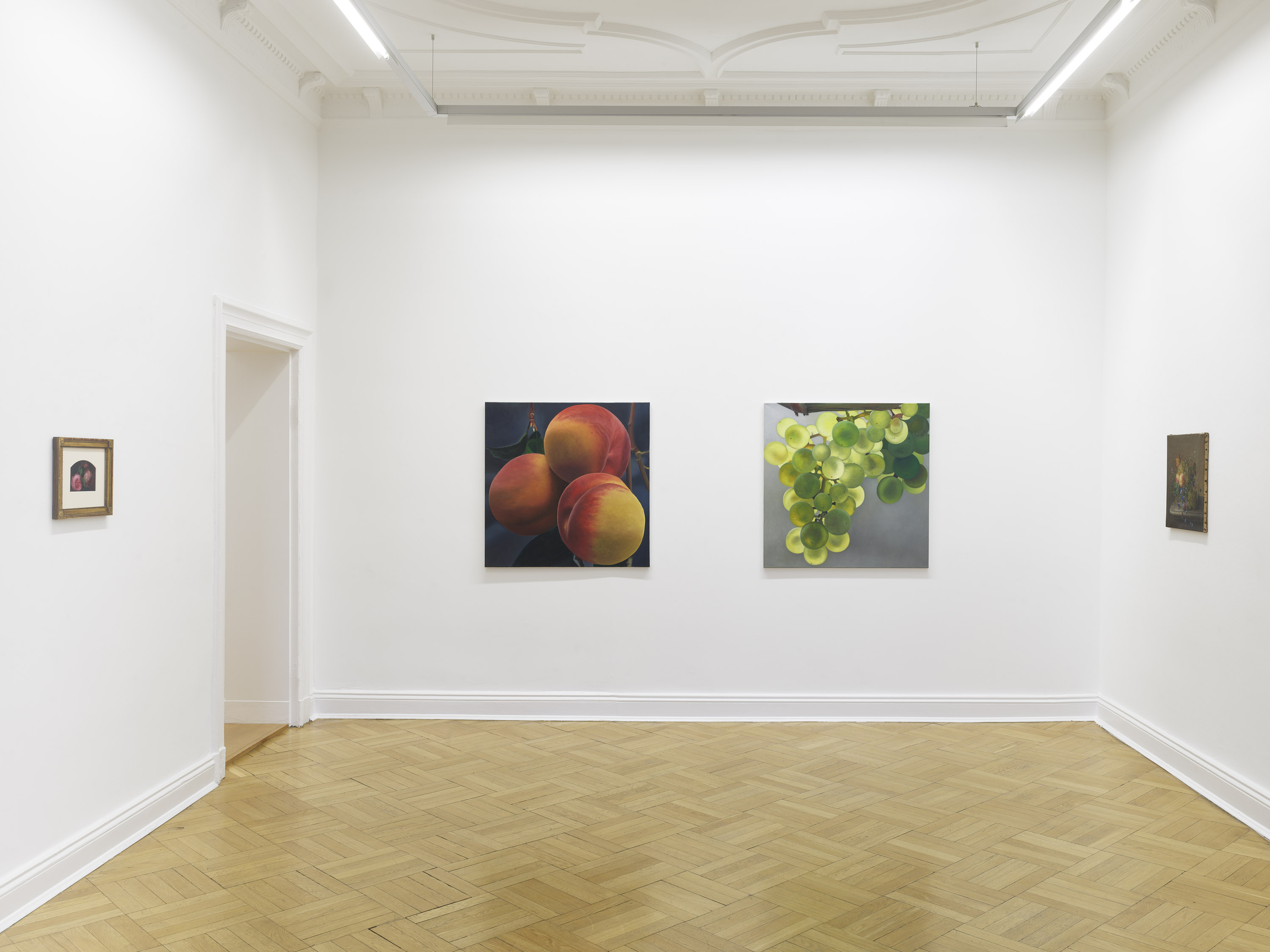
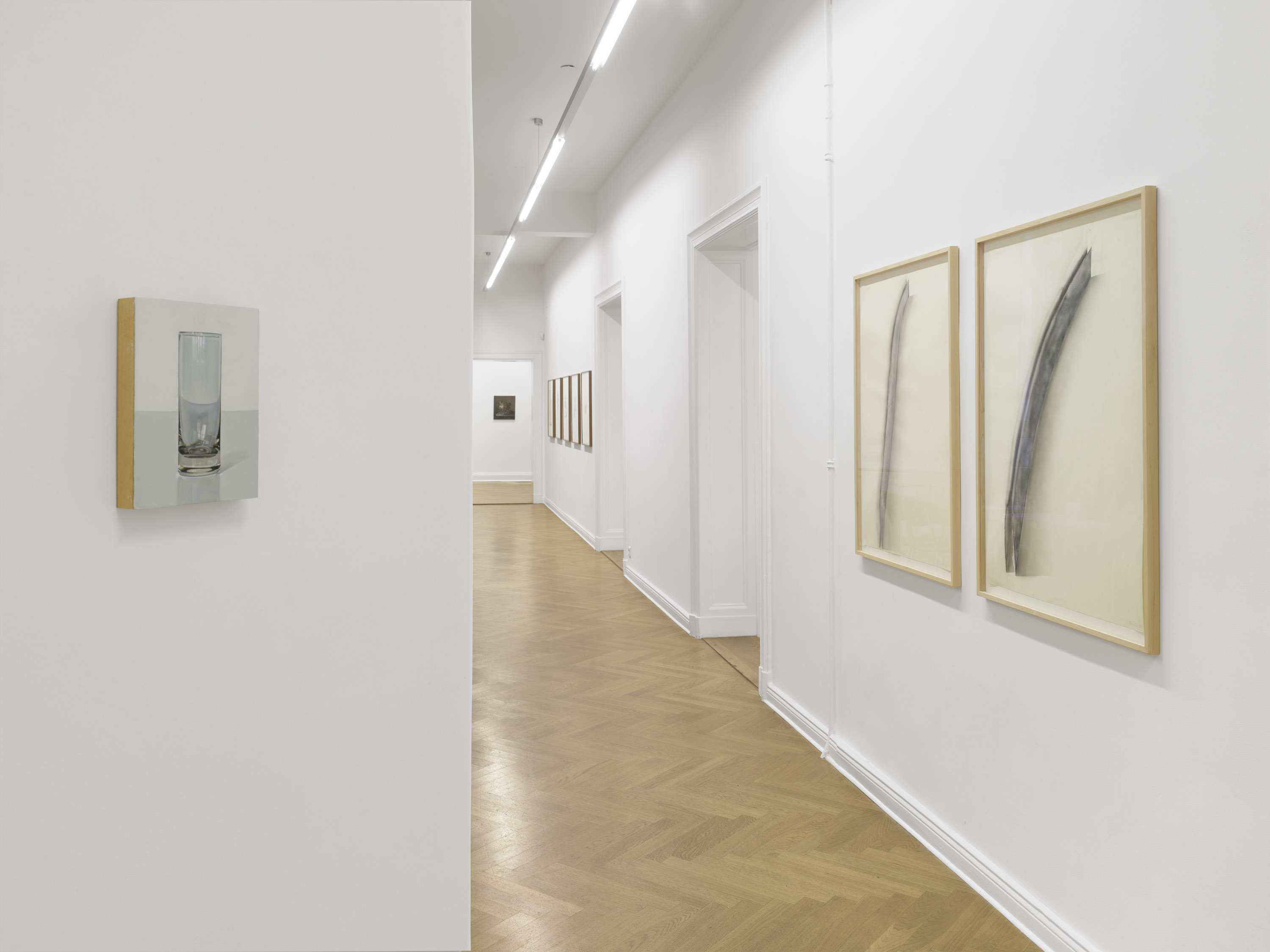
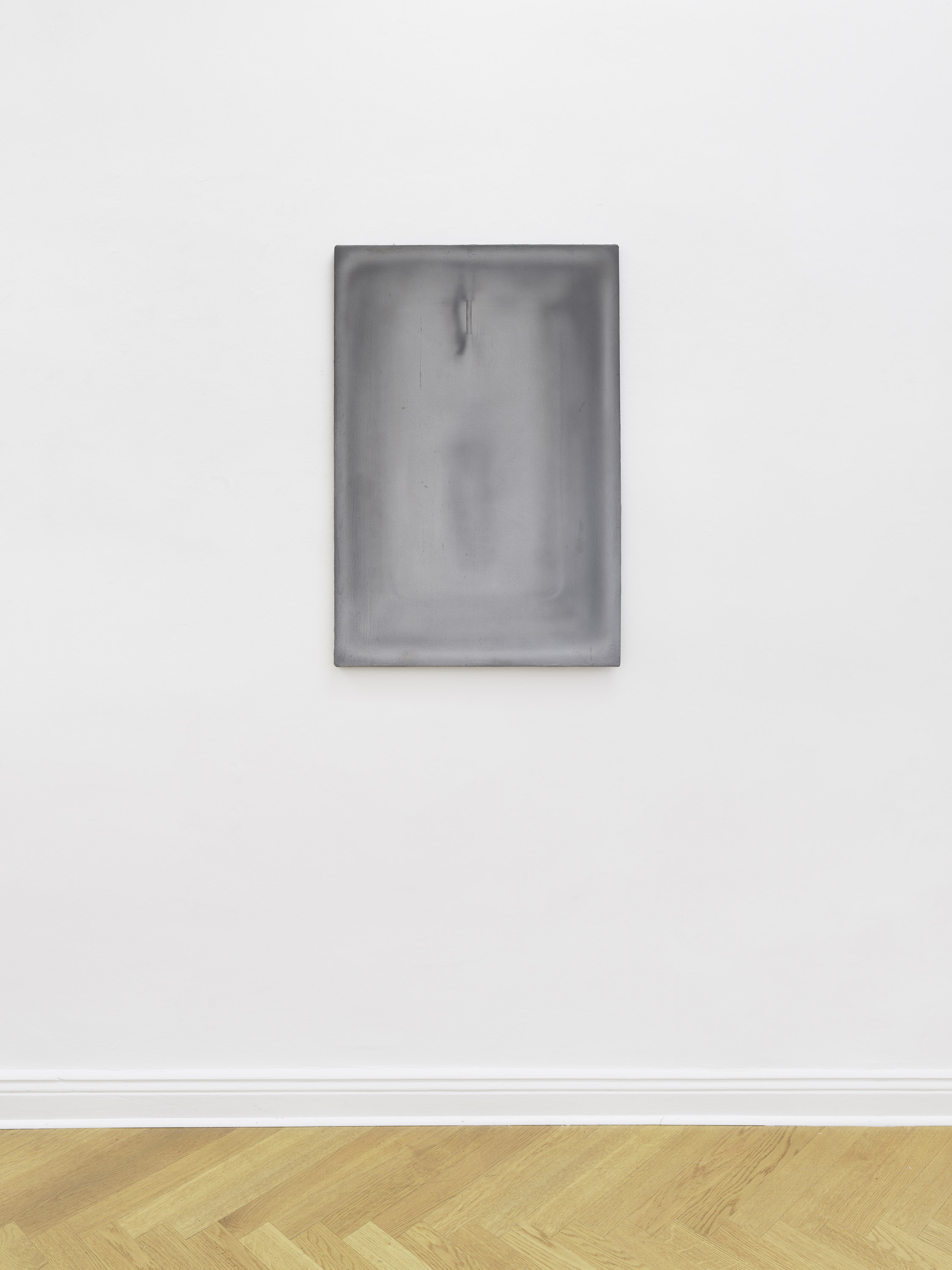
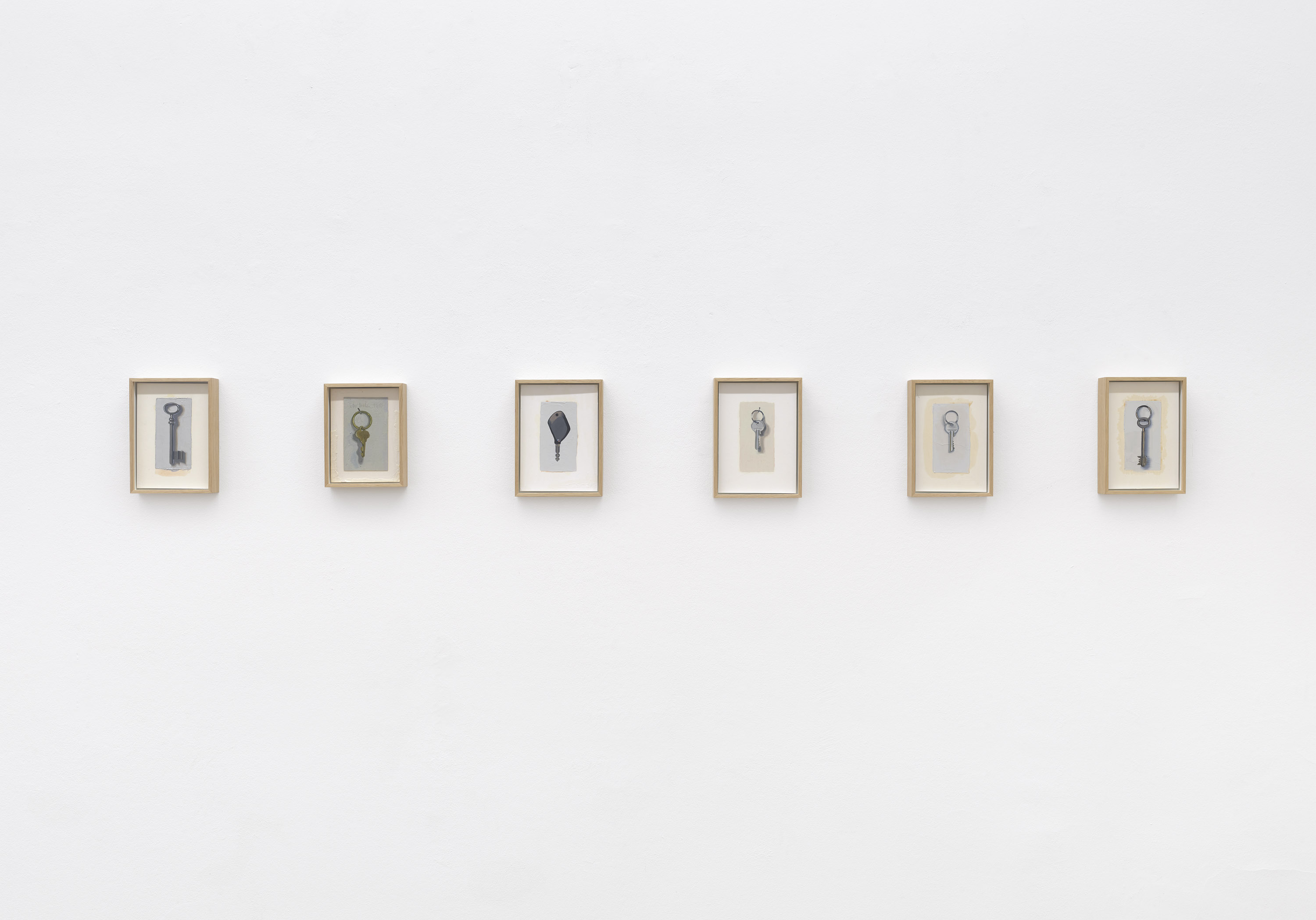
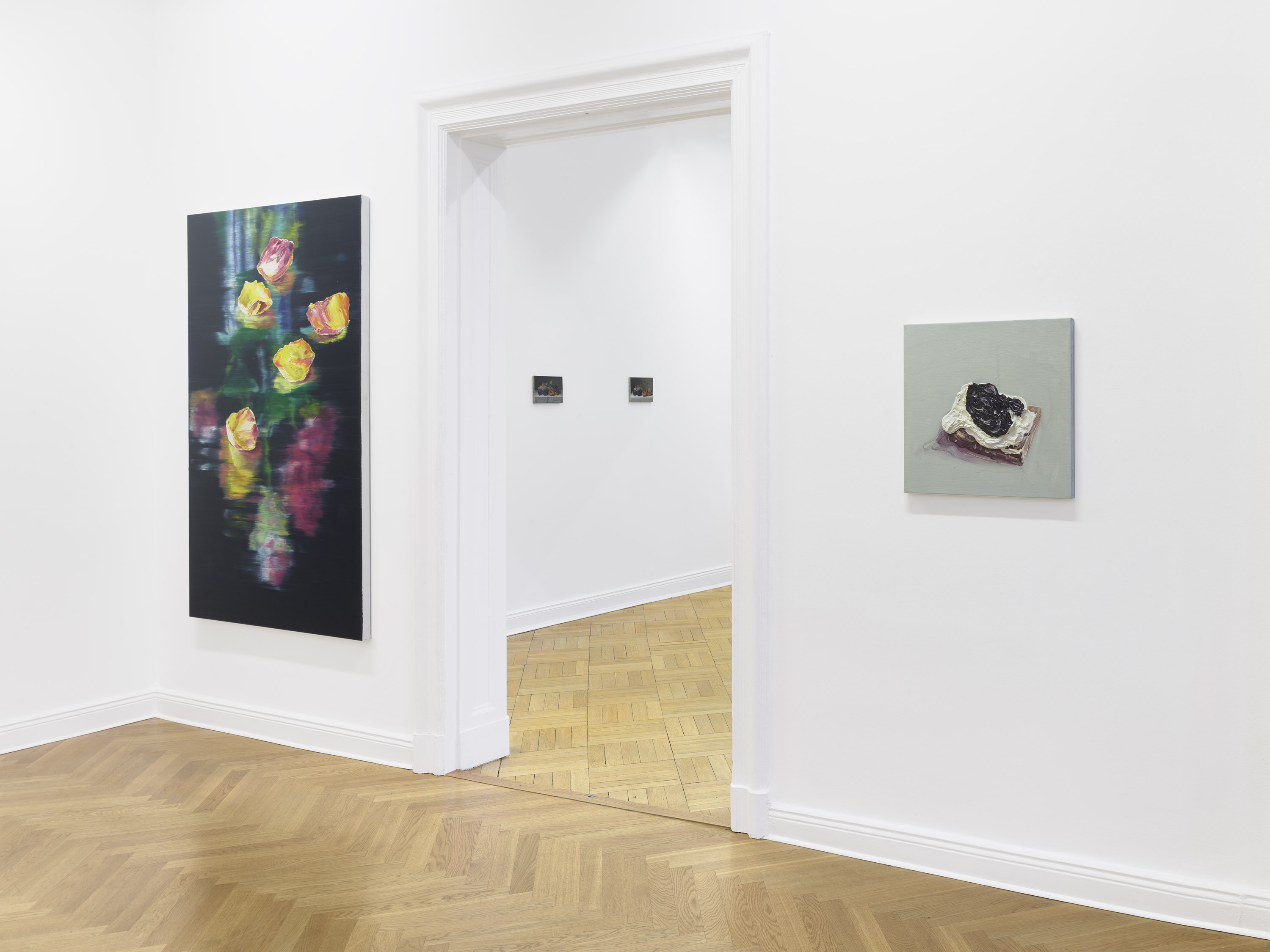
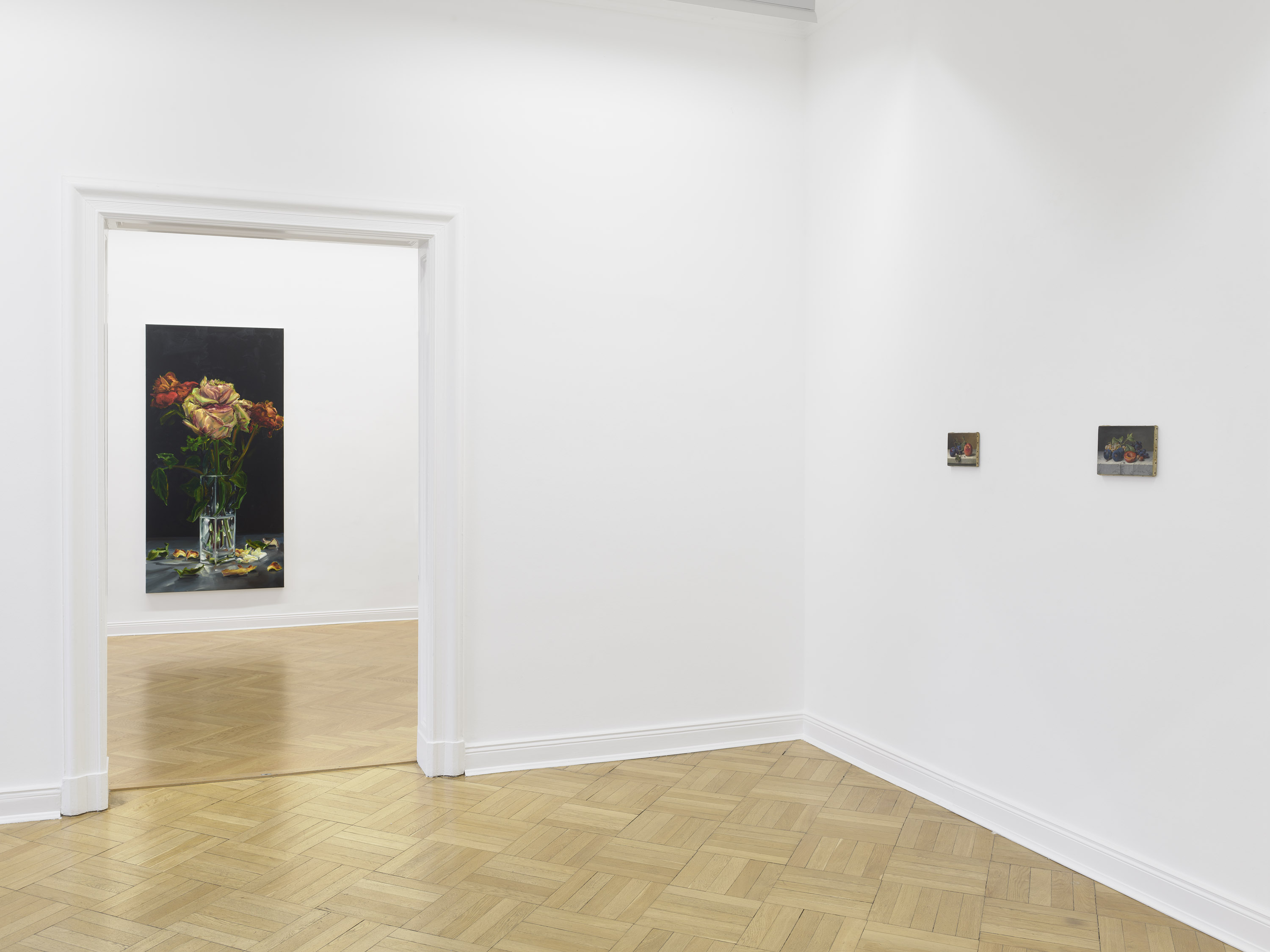
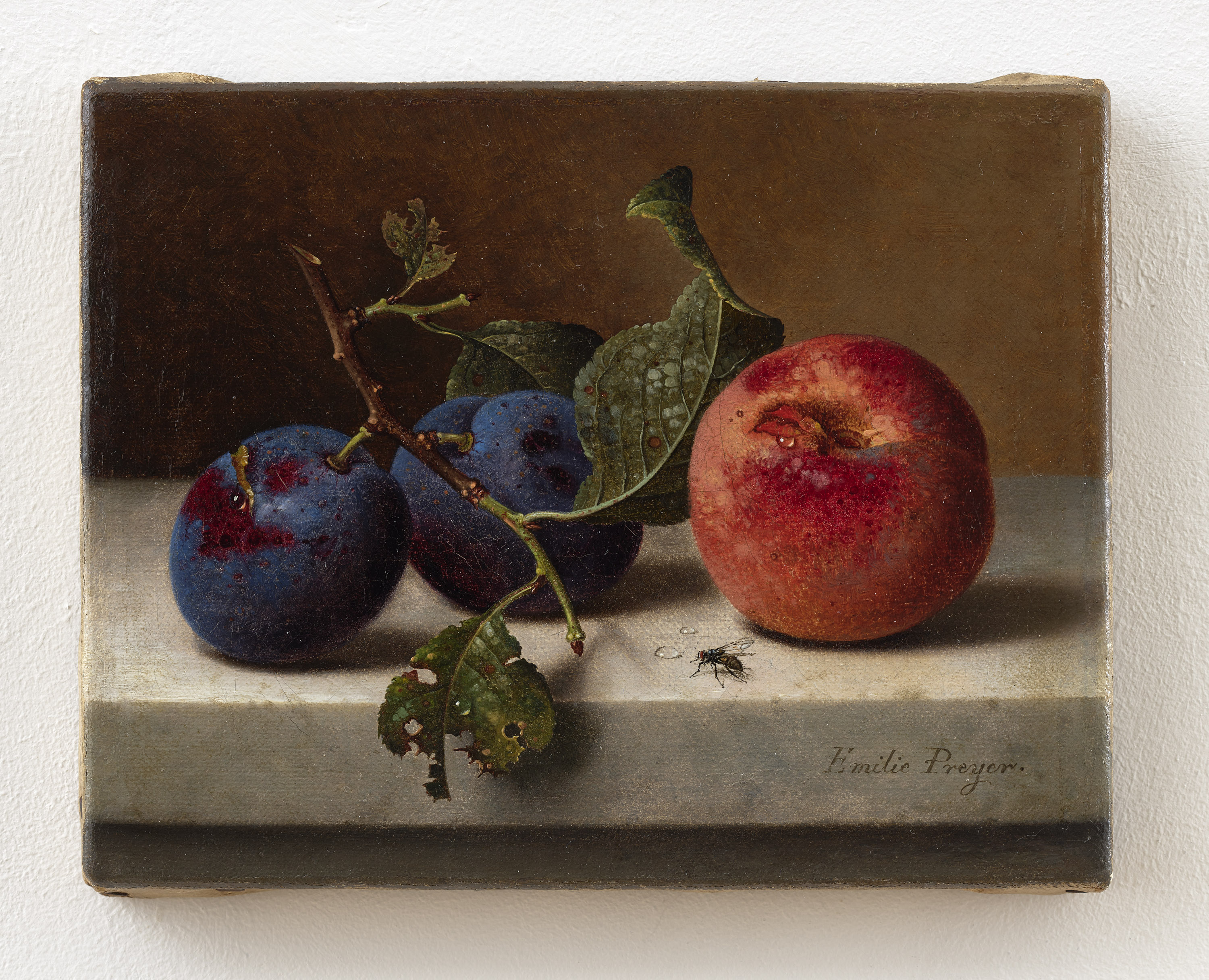
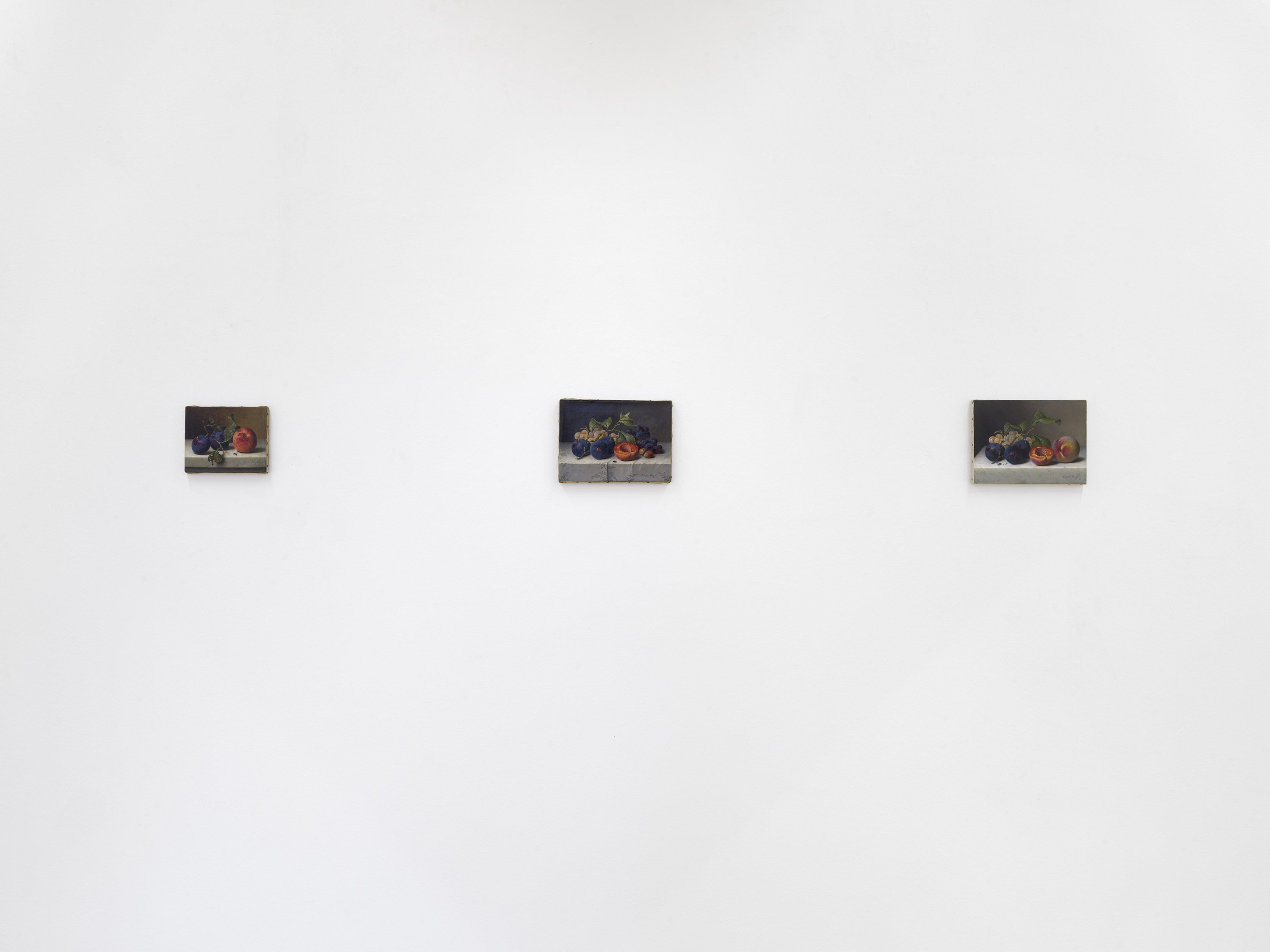
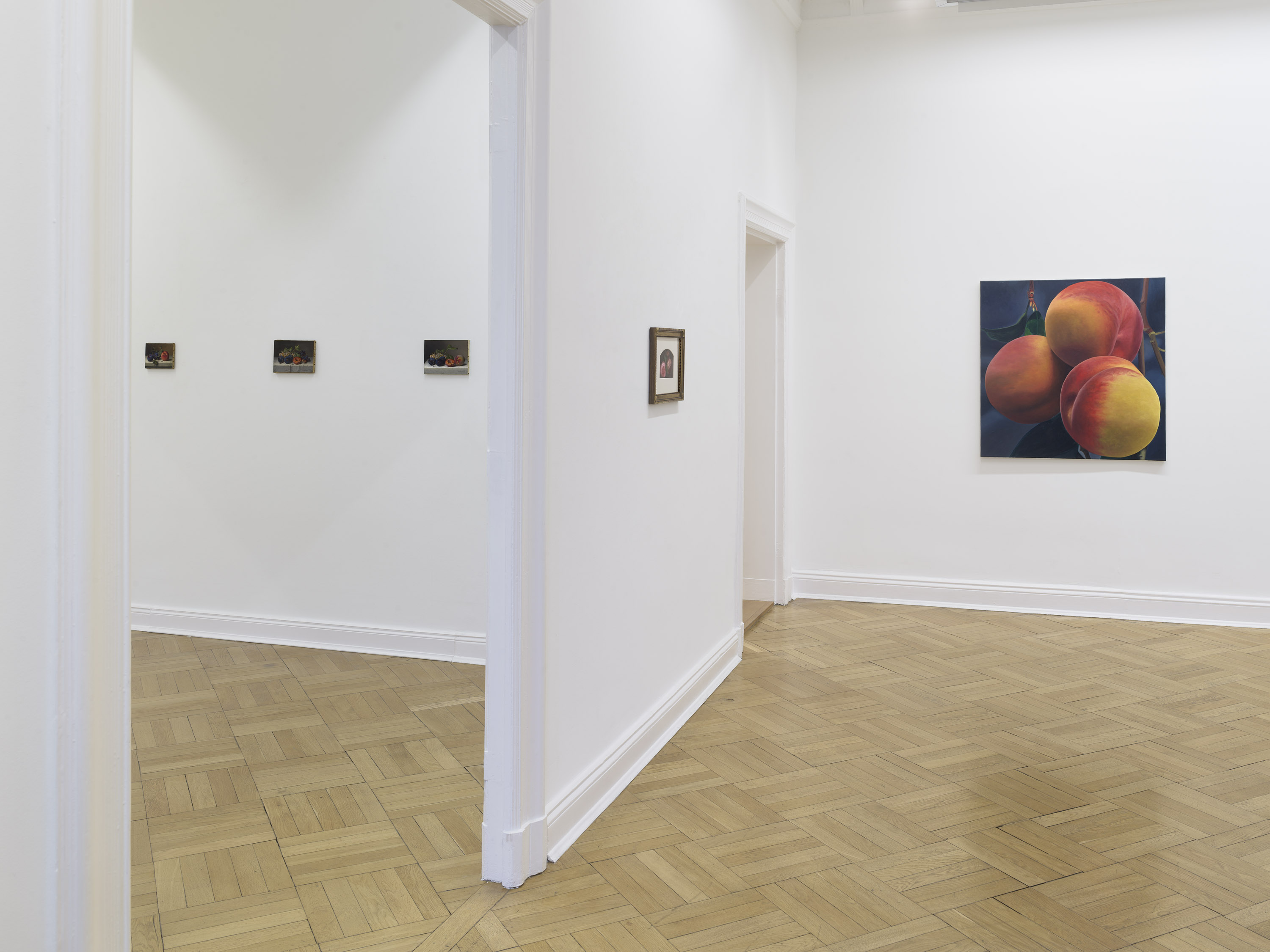
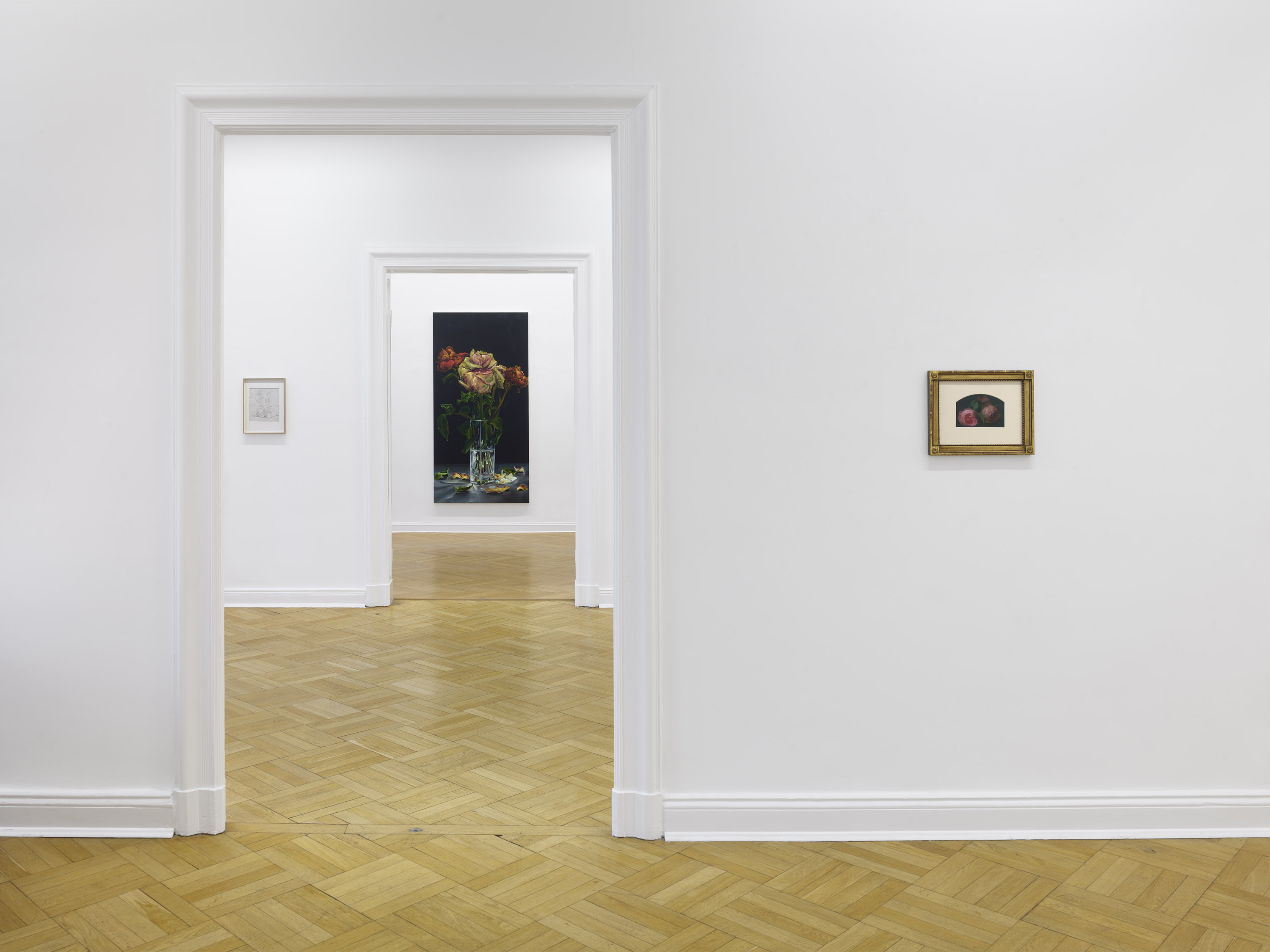
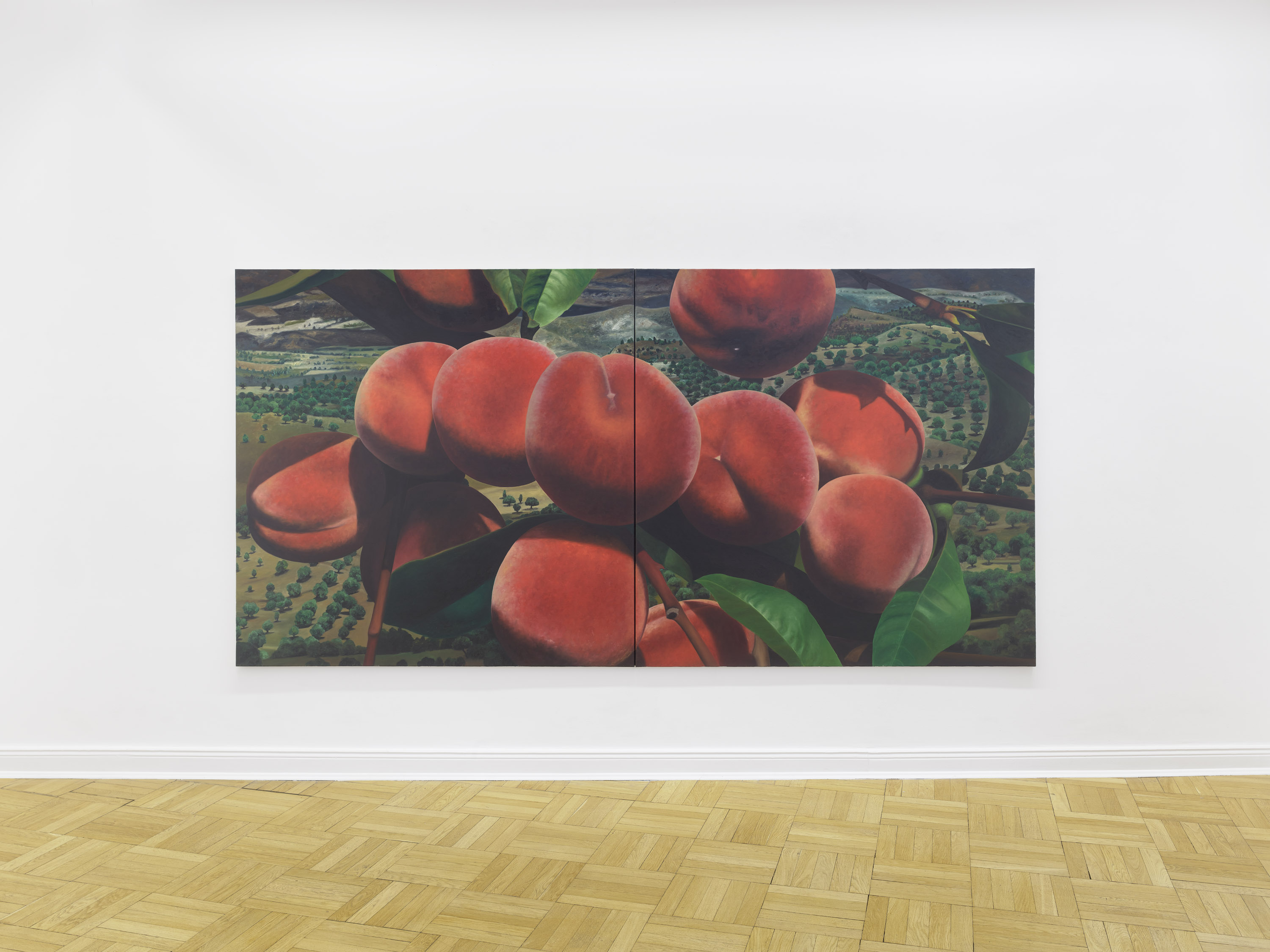
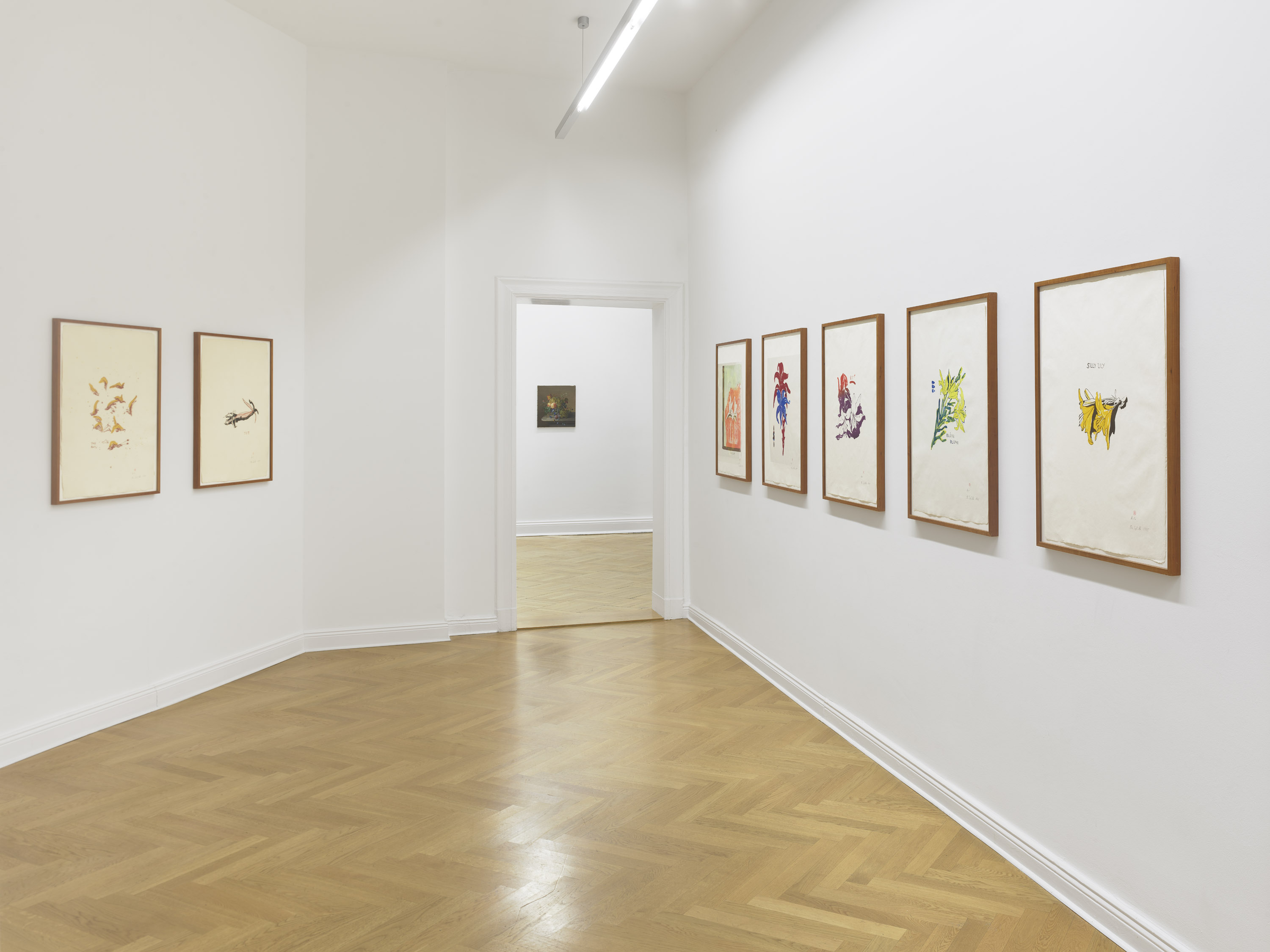
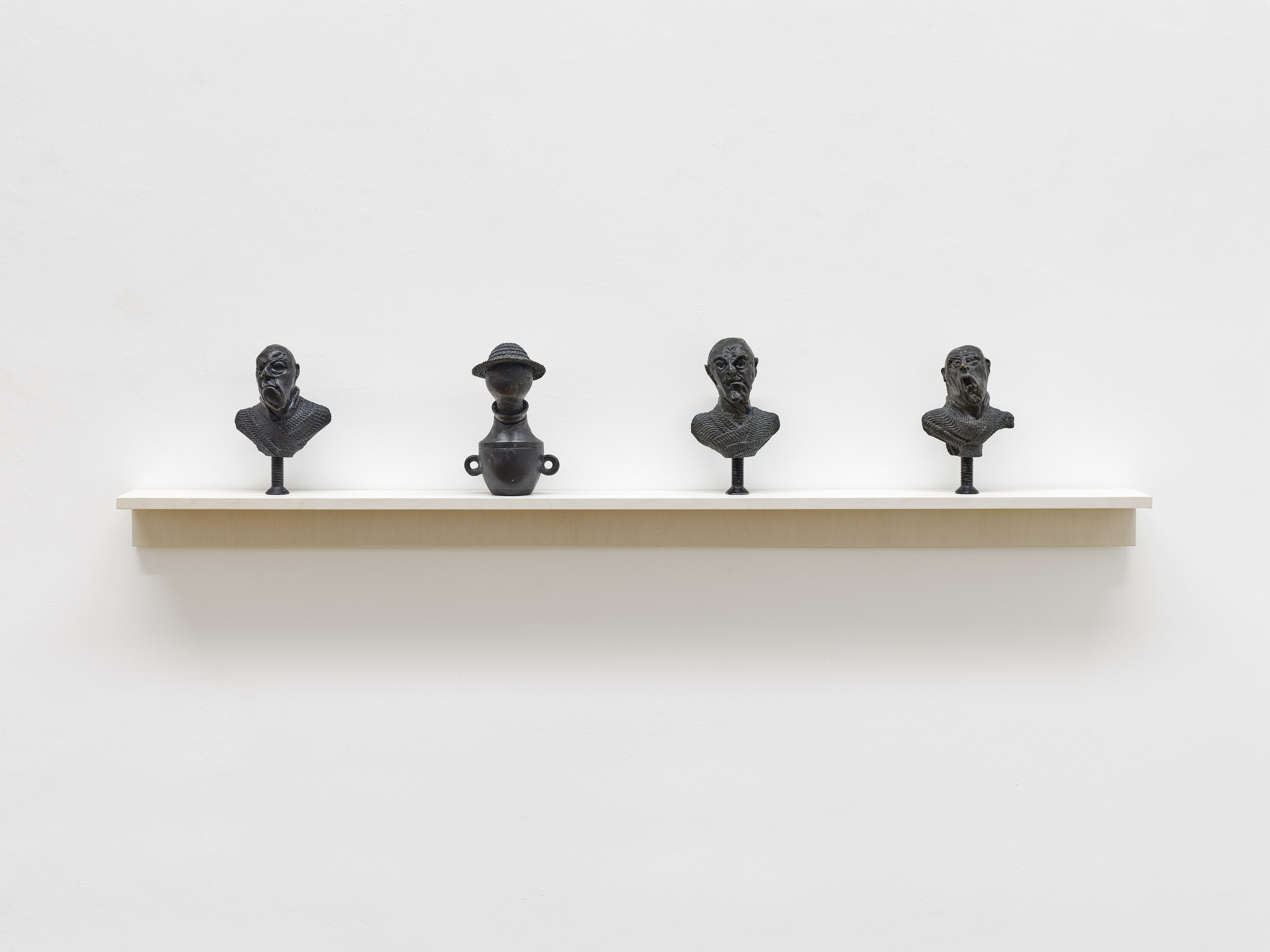
January 28 - March 4, 2023
Paintings and works on paper by:
Peter Dreher (1932-2020), Amelie Kärcher (1819-1887), Karin Kneffel (*1957), Dieter Krieg (1937-2005), Ferdinand Küss (1800-1886), Emile Preyer (1849-1930), Johann Wilhelm Preyer (1803-1889), Thomas Schütte (*1954), Adolf Senff (1785-1863), Cornelius Völker (*1965) – Still life, that is:
“She thought of how all true still lifes can excite that happy insatiable sadness. The longer one looks at them, the clearer it becomes that the things they depict seem to stand on the colorful shore of life, the eye full of the tremendous, and the tongue paralyzed.”
It does not matter if the paintings are from the 19th, 20th or 21st century: the still life has this incredible effect on us, it confronts us with the perfect.
"»Actually, all still lifes paint the world from the sixth day of creation; on which God and the world were still among themselves, without man!« And to a questioning smile from his sister he said: »What they excite humanly would be therefore probably jealousy, mysterious curiosity and sorrow!«"
So, is it this: when we look at the images, we see the most lapidary, a key, a vase, flowers to it, peaches in front of an Arcadian landscape, two pears, and they trigger everything in us, the deepest feelings.
“… to comment adequately on the uncanny art of still life or nature morte they were both hindered by its strange similarity to their own lives.”
This is where one can learn to marvel when grapes glow, peaches are obvious butts, flies are part of life without wanting to be scared off, a snail juggling beyond gravity on a marble slab, a gray tub teaches us to sink, and blossoms are made to float through space. This is art that is simply there and also asks the most beautiful questions.
All quotes from: Robert Musil, Der Mann ohne Eigenschaften













January 28 - March 4, 2023
Paintings and works on paper by:
Peter Dreher (1932-2020), Amelie Kärcher (1819-1887), Karin Kneffel (*1957), Dieter Krieg (1937-2005), Ferdinand Küss (1800-1886), Emile Preyer (1849-1930), Johann Wilhelm Preyer (1803-1889), Thomas Schütte (*1954), Adolf Senff (1785-1863), Cornelius Völker (*1965) – Still life, that is:
“She thought of how all true still lifes can excite that happy insatiable sadness. The longer one looks at them, the clearer it becomes that the things they depict seem to stand on the colorful shore of life, the eye full of the tremendous, and the tongue paralyzed.”
It does not matter if the paintings are from the 19th, 20th or 21st century: the still life has this incredible effect on us, it confronts us with the perfect.
"»Actually, all still lifes paint the world from the sixth day of creation; on which God and the world were still among themselves, without man!« And to a questioning smile from his sister he said: »What they excite humanly would be therefore probably jealousy, mysterious curiosity and sorrow!«"
So, is it this: when we look at the images, we see the most lapidary, a key, a vase, flowers to it, peaches in front of an Arcadian landscape, two pears, and they trigger everything in us, the deepest feelings.
“… to comment adequately on the uncanny art of still life or nature morte they were both hindered by its strange similarity to their own lives.”
This is where one can learn to marvel when grapes glow, peaches are obvious butts, flies are part of life without wanting to be scared off, a snail juggling beyond gravity on a marble slab, a gray tub teaches us to sink, and blossoms are made to float through space. This is art that is simply there and also asks the most beautiful questions.
All quotes from: Robert Musil, Der Mann ohne Eigenschaften
Di–Fr 11–18, Sa 12–16 Uhr
Meierottostraße 1
10719 Berlin
T +49 30 88 71 13 71
mail@galeriefriese.de
www.galeriefriese.de
Di–Fr 11–18, Sa 12–16 Uhr
Meierottostraße 1
10719 Berlin
T +49 30 88 71 13 71
mail@galeriefriese.de
www.galeriefriese.de